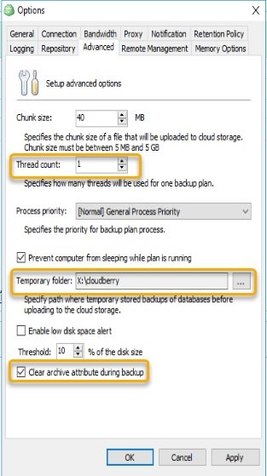Forum tip: Always check when replies were posted. Technology evolves quickly, so some answers may not be up-to-date anymore.
-
Programmatically verifying backup locationWe've built an automated process to build and deploy our servers using powershell. We've also started an initiative to peform automated peer review so that we can ensure that our servers are built to spec and that we have no drift from our standards over time. This will include all requisite service installation and configuration (i.e., Cloudberry, etc). We want to ensure that our backup plans are set up properly. We are already looking through the EngineSettings.list file to ensure some program settings are set correctly, but that file doesn't hold any backup plan info. So for now, we've had to use the Cloudberry CLI to get plan details.
-
Programmatically verifying backup locationI decided to call theexecutable using
cbb.exe
and am saving the output to a string, where I can use theinvoke-command
operator to ensure that the Backup items listed is appropriately set.-like
$ComputerName = "MYSQL01" $ScriptBlock = { cd "C:\Program Files\CloudBerryLab\CloudBerry Backup\" .\cbb.exe getPlanDetails -n DailyBackupPlan 2>&1 } $Output = invoke-command -ComputerName $ComputerName -ScriptBlock $ScriptBlock If($Output -like "*Z:\MyBackupFolder\FULL*"){write-host "Good"}else{write-host "Bad"} -
Cloudberry Backup Ultimate and PowershellWith the Managed product, are those settings accessible via Powershell? What we are trying to do is to not have to RDP into any machine, but run Powershell Pester checks to validate settings from our desktop workspaces in VS Code or Azure Data Studio.
-
Cloudberry Backup Ultimate and PowershellWe're moving to the Managed Product soon-ish, but was hoping that in the interim, we could get something that would expose properties like those in the attached screenshot.Attachment
 Options
(40K)
Options
(40K)

-
Cloudberry Backup Ultimate and PowershellHi Matt. We're trying to automate our build and peer review process and having to log into each machine to validate settings is a drag. Do you know if making those properties acccessible (at least readable) via Powershell is on the roadmap?
Gary Hampson

Start FollowingSend a Message
- Terms of Service
- Useful Hints and Tips
- Sign In
- © 2025 MSP360 Forum

